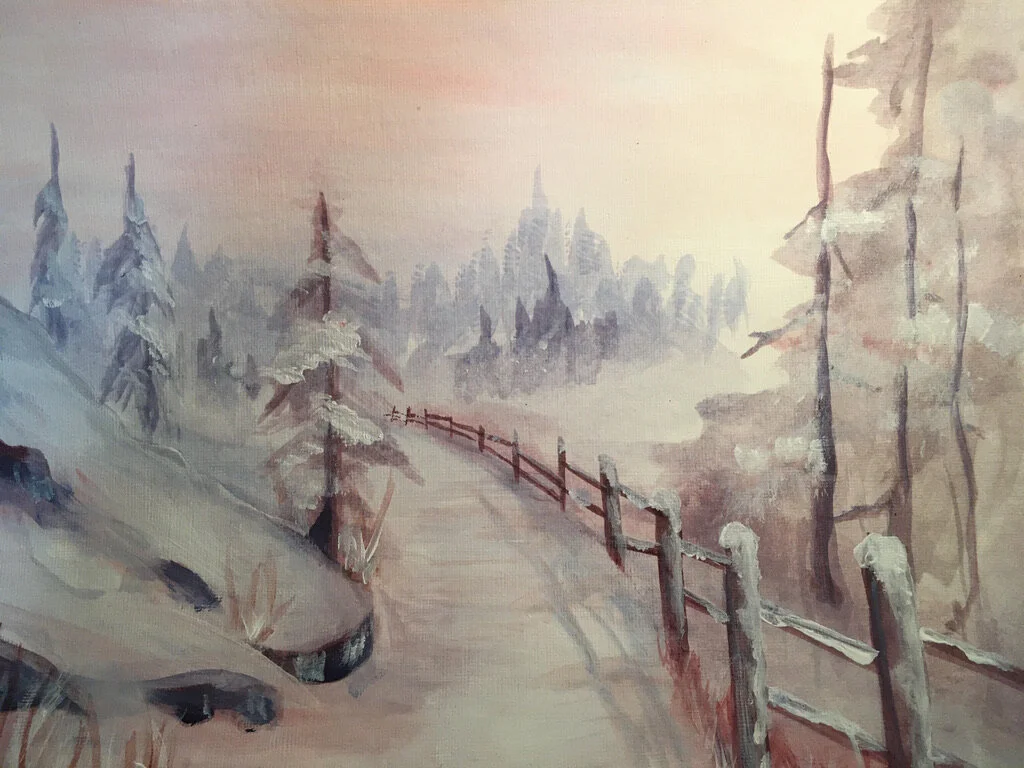This evening we honor the animals large and small who reflect back our humanity to us. We are grateful for their companionship, the lessons they offer about caring, loving, and sharing the earth with each other.
Read MoreAs the days grow shorter and colder, the eighth grade students have been doing an artistic study of snowscapes.
Read MoreThe second evening of our Winter Spiral honors the Plant Kingdom, which nourishes us.
You might add something from the Plant Kingdom to your own Winter Spiral at home: flowers, a bough of greenery found outdoors, a beautiful leaf…
Read MoreThe first evening of our Winter Spiral honors the Mineral Kingdom: the earth, rocks, stones, and the essential minerals and elements that make up our natural environment.
Read MoreA few ideas for creating a quiet space to facilitate the Winter Spiral experience.
Read MoreEach year during this dark time we offer this symbolic experience to the children. When the time comes in our precious children's development, we must learn to let go of our control and send them off further into the unknown with faith, hope, and love. This festival is our prayer for the children’s successful journey through life.
Read MoreNow that we are several months into a new school year of distance learning, we thought we’d check in with a few teachers throughout the school and see how things are going!
Read MoreCommunity is our most precious asset here at Cedarwood. It is what we value and what we crave in this time of quarantine. We need to come together to discuss how we can undertake this important work and commit ourselves to it.
Read MoreWatch a panel discussion about the meaning & ways of celebrating this tradition in Mexico and the U.S.
Read MoreAs a founder of Cedarwood Waldorf School, Ms. Susan’s focus has been the growth and development of the school and the serving of the community.
The school is now 23 years old with strong teachers, staff, and community. It has grown and matured in a way that we can now offer, nurture, and give back to the outer world. Ms. Susan’s compassionate teaching and selfless service are resonating throughout the school as a fundamental way of being.
Read MoreWe are currently living in multiple layers of uncertainty. Our Michaelmas time challenges us to let go of whatever is inessential and work together in collaboration to overcome our fears.
Read MoreGrade 8 launched the new school year by creating art inspired by the Pacific Northwest.
Read MoreSuddenly, we have become completely reliant on screens and computer technology in order to work, express our thoughts and feelings, and to make our connections with others. This directly challenges the sphere of education in general, but specifically Waldorf schools worldwide, as our pedagogy is based on in-person relationships, with each other and with nature.
Read MoreThis series of exercises was designed to cultivate an ability to think with our hearts, rather than with our heads. Through these exercises we can attain thoughts that unite us with others in such a way that we lose neither our individuality nor true freedom.
Read MoreThere may not be a more relevant story for our eighth graders to tackle than the fantastical tale about the concept of time and how it is used — and misused — by modern humans.
Read MoreThis series of exercises was designed to cultivate an ability to think with our hearts, rather than with our heads. Through these exercises we can attain thoughts that unite us with others in such a way that we lose neither our individuality nor true freedom.
Read MoreBy the end of snack, the soup pot is empty and there is a feeling of well-being: our whole being is nourished and it all began with a job well done.
Read MoreWorld languages are vital to fulfilling the mission of Waldorf education: to educate children to reach their full potential as human beings who have the capacity to freely choose empathy and peace.
By design, Waldorf schools offer two world languages starting in Grade One. This fundamental part of the curriculum is instrumental in developing the flexibility of thinking and feeling necessary for truly empathetic communication.
Read MoreNatural materials like the ones you see in our Early Childhood spaces and grade school classrooms develop a sense of life in young children.
Read More



















